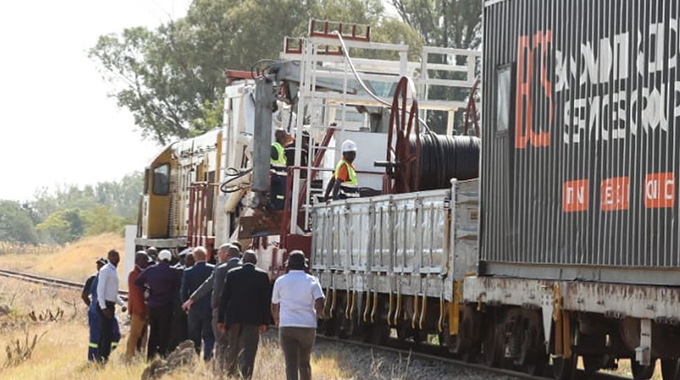Zimbabwe’s digital leap: National Rail Fibre Optic Project to propel national development

Jacqueline Ntaka
ZIMBABWE’S recent investment in the National Rail Fibre Optic Project is a visionary step that promises to significantly accelerate the country’s development. This US$18 million venture, which stretches 1 500 kilometres along the railway lines, is not just an infrastructure upgrade; it’s a strategic move towards digital inclusivity and enhanced connectivity.
Fibre optic technology is the backbone of modern communication, offering high-speed internet access that is essential for various sectors, including education, healthcare, business and Government services. Fibre optic technology is a method of transmitting data, voice, and images through the passage of light along thin, transparent fibres, typically made of glass or plastic. In telecommunications, it has largely replaced copper wire in long-distance telephone lines and is used to link computers within local area networks. The technology is also the basis for fibrescopes used in medical endoscopy and in inspecting the interiors of manufactured structural products.
The core of fibre optic technology is the optical fibre itself, which is a hair-thin strand that can be as small as 10 micrometres in diameter. Light rays transmitted into the fibre can travel for great distances with minimal loss of intensity, thanks to a phenomenon known as total internal reflection.
This allows for high-speed internet access and communication over longer distances and at higher bandwidths than traditional metal wires, with less signal loss and immunity to electromagnetic interference.
Fibre optics is crucial for modern communication systems and has revolutionised the way information is shared and accessed globally. By investing in this technology, Zimbabwe is laying the groundwork for a digital revolution that can transform its economy and society.
The project, spearheaded by the Bandwidth and Cloud Services (BCS) Group, aims to connect rural and urban areas alike, ensuring that all Zimbabweans can participate in the global digital economy. This connectivity is crucial for attracting foreign investment, supporting local businesses and providing educational resources to remote areas.
Zimbabwe can look to several countries that have experienced rapid development due to similar investments.
Singapore, for instance, leads the global Fibre Development Index with its extensive fibre-to-the-home (FTTH) penetration and high-speed internet access, contributing to its status as a leading financial and technological hub. South Korea, another top performer, has leveraged its robust broadband infrastructure to become a global leader in innovation and technology.
The United Arab Emirates (UAE) and Qatar have also seen significant economic growth and development by investing heavily in fibre optic technology, which has supported their smart city initiatives and enhanced their competitiveness in the global market.
In short, the National Rail Fibre Optic Project is more than an infrastructure development; it’s a commitment to Zimbabwe’s future.
By following in the footsteps of nations that have successfully harnessed the power of fibre optics, Zimbabwe is poised to redefine its developmental trajectory and emerge as a digitally empowered society.
The project is a testament to the nation’s resolve to embrace technological advancement and digital inclusivity, promising to redefine Zimbabwe’s developmental trajectory in the years to come.
∗ Jacqueline Ntaka is the CEO of Mviyo Technologies, a local tech company that provides custom software development, mobile applications and data analytics solutions. She can be contacted on [email protected]








Comments